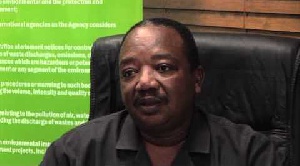Daniel Amlalo, Executive Director of the Environmental Protection Agency (EPA), has stated that waste- organic and biomass- generated by industries and humans could provide 30 percent of the nation’s energy if harnessed effectively.
The impact of renewable energy on production cost and competitive pricing of locally produced goods and services is immense and could as well influence domestic expenditure on energy, he indicated.
Mr Amlalo made this known during the celebration of this year’s World Environment Day under the theme, ‘Sustainably energy and converting waste to energy, the responsibility of all’ in Accra recently.
Dr. Daniel Bour, Vice Chancellor of Valley View University, also stressed the need to generate energy from the huge amount of waste being created in the country.
He said it was imperative for the country to take advantage of non-recyclable waste materials and convert them into electricity and usable heat or fuel.
This, according to Dr. Bour, could be done through a variety of processes, including combusting and gasification, among others.
He said there was a huge potential for converting waste into energy, which is central to the development of every community.
“Our nation is currently battling with energy problems, which are having devastating effects on our economic and social life.
“In our search for solutions, we must make effort to recover energy from waste by converting non-recyclable waste materials into usable heat, electricity or fuel through a variety of processes including combusting, gasification, anaerobic digestion and landfill gas recovery,” Dr. Bour said.
He said “the problem of energy generation must be a problem of all irrespective of anybody’s political biases, because energy is central to the development of every community”.
It is estimated that Accra Metropolis generates between 1,800 and 2,00 tonnes of solid waste a day with about 500 tonnes of the waste left to deteriorate.
Business News of Friday, 12 June 2015
Source: Daily Guide

















